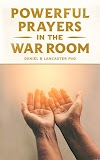SUMMARY OF THE GUIDELINES FOR REOPENING OF SCHOOLS
The guidelines cover four thematic areas:
i. Staying home and learning safely
ii. Before schools and learning facilities reopen
iii. Reopening process
iv. Conditions for safety when learning facilities are reopened.
In each of these areas actions and responsibilities are identified for various
stakeholders such as policy, financing, safe operations, learning, training, reaching
the most marginalized, building back better, safety and hygiene, Infection
Prevention and Control, (IPC).
1. STAYING HOME AND LEARNING SAFELY
Ensuring continuity of learning is vital.
Staying home and learning in a safe environment does not only address learners
and educator’s basic physical safety needs but also ensure that all learners and their
families/ household members are safe.
This means that all education environments must be inclusive irrespective of
location, access to the internet, and socio-economic background.
The following actions are recommended to safeguard the health, safety and
security of learners accessing remote learning while ensuring that quality outcomes
are obtainable:
• Conduct online training that not only prepares teachers to teach in a way that
safeguards the health, safety, and security of the learners but also enables
them to facilitate learning using 21st century pedagogy based on Information
and Communications Technology, (ICT).
• Revise to strengthen current remote learning programs initially launched for
stronger curriculum backing towards improving relevance and quality on a
grade level to level basis.
• Provide learners access to online resources materials online learning
platforms, radio or television programs
• Children and young people should at home and wash their hands regularly,
maintain personal hygiene and adhere to the Nigerian Centre for Disease
Control, (NCDC), and World Health Organisation, (WHO), Covid-19
guidelines.
2. BEFORE SCHOOLS AND LEARNING FACILITIES REOPEN
Federal and State Ministries of Education (SMoE) should decide when to reopen
schools after due consultations with the Presidential Taskforce on COVID-19
(PTF) and other critical stakeholders taking into consideration key requirements
listed in the guidelines. In each state, a functional School Health programme
chaired by a state school health focus officer should be put in place while a school
focal officer should be assigned in every school.
Schools must also put in place systems that meet the following:
• Safe distancing procedures
• Alternative learning models for safe distancing.
The guideline proffers
diverse alternative learning models tailored to the specific learning context that
assures equity in learning
• Review existing policies, practices, and risk mitigation strategies in the use
of schools for other purposes, such as distance learning centers, temporary shelters,
isolation, quarantine and treatment centers, markets, voting centers, and others.
• Develop and display at school’s simple context-specific reference protocols
on day to day actions to be operated in each school.
• Conduct risk assessment with a view to understanding the gaps in the system
that can increase the risk of transmission and make recommendations for
addressing the gaps
• Safety and hygiene in all stages and phases of the school reopening process
which promote behaviors that reduce spread, such as school commutes (to and
from school travelling), safe distancing, frequent hand washing, and the use of
facemasks.
Other guiding framework includes sensitization, financing, learning, and monitoring prosedure
3. THE REOPENING PROCESS
Adjusting to the new school process requires much planning. A phased and gradual
reopening of schools is advocated to minimize the risk of infections in schools and
the resurgence of COVID-19 infections in the community. This involves measures
including:
• Training of teachers and other personnel on safety and hygiene measures.
• Establishing a COVID-19 referral system.
• Ensure availability of an ambulance and access to a
testing/isolation/treatment centre including NCDC helpline and state government
facilities.
• Ensure adequate Water, Sanitation and Hygiene (WASH) facilities across
the school premises.
• De-congesting classrooms, hostels, worship centres and other spaces.
• Encouraging use of open spaces for gathering and promoting outdoor
activities.
• Establish a staff/students committee for regular surveillance, monitoring and
enforcement of COVID-19 guidelines.
4. ENSURING SAFETY WHEN SCHOOLS AND LEARNING FACILITIES
REOPEN
Preventive actions are sustained through regular monitoring of compliance in
schools after reopening to ensure the safety and health of all learners, teachers,
administrators, and other education personnel.
Each school will comply with periodic Joint Risk Assessment for Safe Reopening
of Schools and Learning Facilities Checklist under Annex A of the guidelines.
Implementing these guidelines will require the collaborative support of all
stakeholders to reopen schools and learning facilities.
With the guidance offered in this document, schools should be able to put systems
in place that allow them reopen in a way that protects learners, teachers,
administrators, parents, and all stakeholders while providing high-quality education.












0 Comments